Suzuki V-Strom 250 SX vs Royal Enfield Scram 411 Comparison: An Identity Crisis!
Both the motorcycles, Suzuki V-Strom 250 SX vs Royal Enfield Scram 411, suffer an identity crisis - one is a road bike pretending to be an ADV while the other is an off-roader pretending to be a Scrambler!

At first, I thought that a comparison between the Royal Enfield Scram 411 and Suzuki V-Strom SX was an odd one. I mean, an Indian motorcycle from the house of Royal Enfield going up against a Japanese motorcycle from the house of Suzuki? One is powered by a big lumpy motor and likes to take it easy, while the other one has got a high-revving engine with less displacement and likes to be on the boil all the time. One is tough, and the other’s precise. The difference is clearly not subtle. In terms of style, it becomes even more conspicuous, for both these bikes are poles apart. Regardless of how I looked at it, I couldn’t find a common point to begin the comparison, except that both bikes are quite closely priced. It was then that Manav chimed in, ‘Don’t both motorcycles promise you an adventure? Why not start there?’
Suzuki V-Strom 250 SX vs Royal Enfield Scram 411: The Plan
You see, adventure isn’t something that’s only found off-road, but it does present itself in abundance once you venture off the beaten path. So, Shivank, who had happily agreed to accompany me for the day, and I decided to do exactly that. And because both these motorcycles are also considered everyday workhorses, the plan was also to find out how well they do on the road.
Now, those of you who follow our ‘Long Term’ section will know that I spent a considerable amount of time with the Scram and was sad to see it go. One might even say I was a bit biased towards it because, at first, I didn’t find the Suzuki to be too appealing – its construction didn’t feel robust in comparison to the Scram, and its alloy wheels didn’t inspire confidence for the off-roading it was about to endure. But most of all, it was its meagre 120mm of suspension travel at the front compared to the 190mm of the Scram that led me to favour the latter. But enough with first impressions, it was time to put my money where my mouth was.

Suzuki V-Strom 250 SX vs Royal Enfield Scram 411: Dirt(y) Playing Field
The first thing I wanted to find out was which one could jump the highest. Besides offering an exhilarating experience, it also allows for some great pictures. Starting off on the Scram, it easily cleared the jump. It does tend to feel a bit heavy, and you do hesitate a little as the momentum builds up before a jump. But in just a couple of attempts, I felt comfortable enough for some air time. It felt like the Scram was built to do this all day long, i.e. take a beating. You see, our playing field was littered with small thorns, which were difficult to see through the naked eye. Now, two of them had managed to pierce the Scram’s front tyre and create five holes in the tube. Yes, you read it right – tube. But luckily a puncture shop just half a kilometre away saved the day. So, my first lesson was that spoked wheels with a tube aren’t always the best choice for a casual rider – advanced riders who carry tools and a tyre puncture repair kit, however, can deal with it easily.
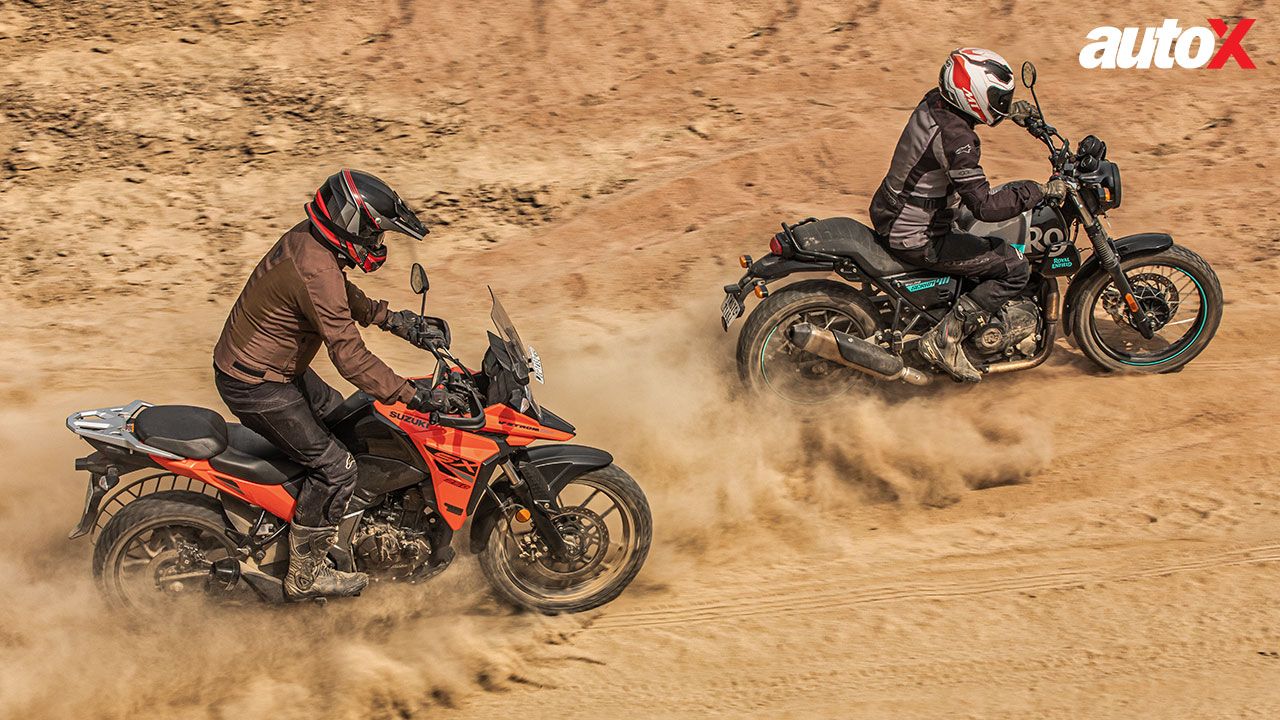
The V-Strom was next. Fingers crossed, I attempted my first jump on it. I took off slowly at first, scared that I might damage the rim, but surprisingly, the V-Strom managed to clear it without a lot of fuss. You do, however, need proper technique on the V-Strom, because otherwise, chances are you will land hard on the front tyre and crack the rim. Generally, the Scram is a bit forgiving in this regard, given its long suspension travel and heavy-duty build. I upped the pace of the V-Strom, and lo-and-behold, it managed to go as high as the Scram.
Next, I tried standing up while riding on both motorcycles and once again, the V-Strom SX managed to fare as well as the Scram 411. I must add here that when you are standing up, you feel a little more comfortable on the Scram. The V-Strom requires you to be slightly more bent forward and have a larger bend in your knees compared to the Scram.
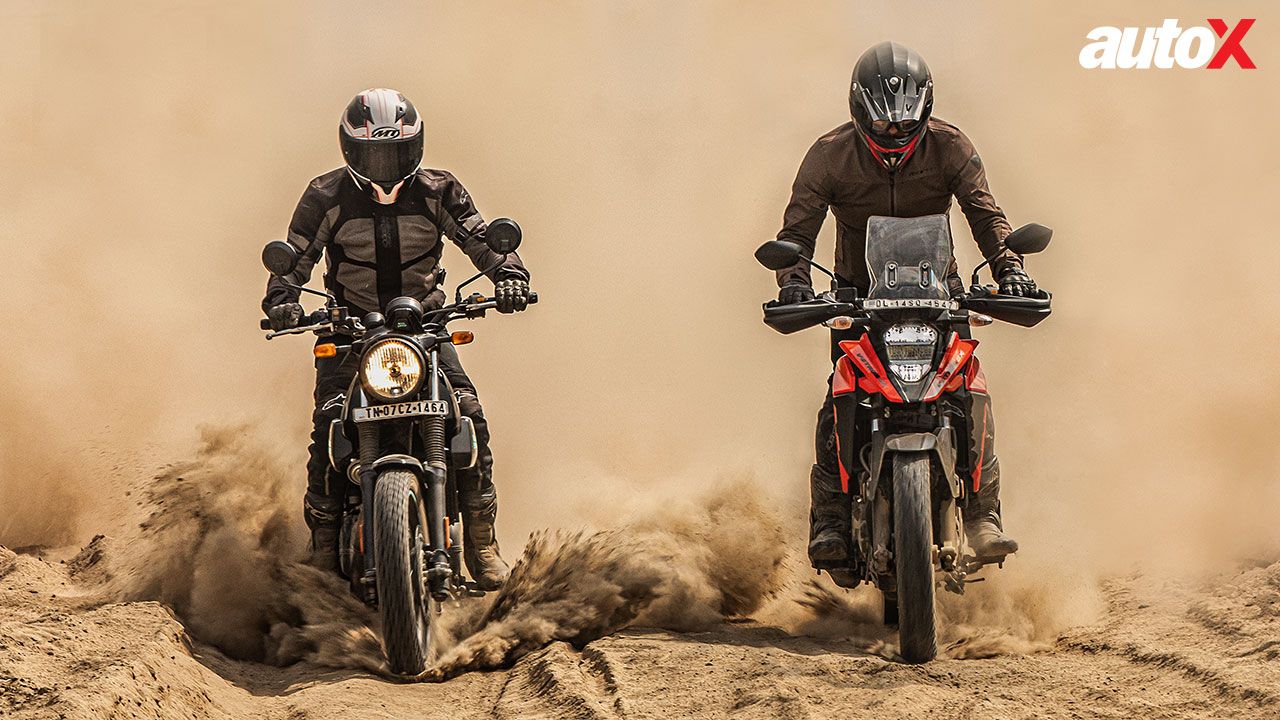
The last off-road test was to ride both motorcycles in deep sand, and I was all but certain that the Scram would deliver a knockout punch to the V-Strom in this test. But once again, I had to eat my words. The weight of the Scram makes it a handful if you are gung-ho from the get-go. It requires you to take it slow at first, and once you understand how it behaves, it allows you to extract more out of it. But, you must always be careful about the front tucking in or the rear sliding too far because when that happens, the weight of the Scram suddenly makes itself quite apparent.

The V-Strom is the complete opposite. It’s a light motorcycle and its front end offers more feedback than the Scram’s. It’s easier to make micro-adjustments, which means that you can carry speed even when you go through a particular patch of deep sand for the first time. Even if the front gives up or the rear steps out more than you want it to, it’s easily salvagable. So far, then, it seems that if the V-Strom is not ahead of the Scram in this off-road test, it’s definitely breathing down the latter’s neck.
Suzuki V-Strom 250 SX vs Royal Enfield Scram 411: Road Manners
When you leave the dirt behind and embrace the smooth feel of the tarmac, you realise these motorcycles indeed have a few things in common. Both motorcycles allow you to sit quite similarly, i.e. with a straight back for most parts and moderately bent legs. The handlebars are within easy reach on both of them, although the V-Strom’s foot pegs are slightly higher set than that of the Scram.
In the city, the Scram seems comfortable in any gear, which is its biggest advantage in the on-road test. The V-Strom can cover gaps more quickly and sharply because of its light and agile nature. Now, it may not have the low-end grunt of the Scram, but this problem can be solved by wringing open the throttle, as the power delivery is linear and quite friendly all the way to the red line. Even on the highway, the V-Strom can cruise comfortably above 100km/h, whereas the Scram starts to run out of breath by that point. It can do higher speeds, but it feels out of its element in doing so. In terms of handling, while both motorcycles run on block-pattern tyres, it’s the stiffer and neutral chassis of the V-Strom that impressed us more. The Scram does decently well around a corner, but it can’t be pushed as hard as the V-Strom.
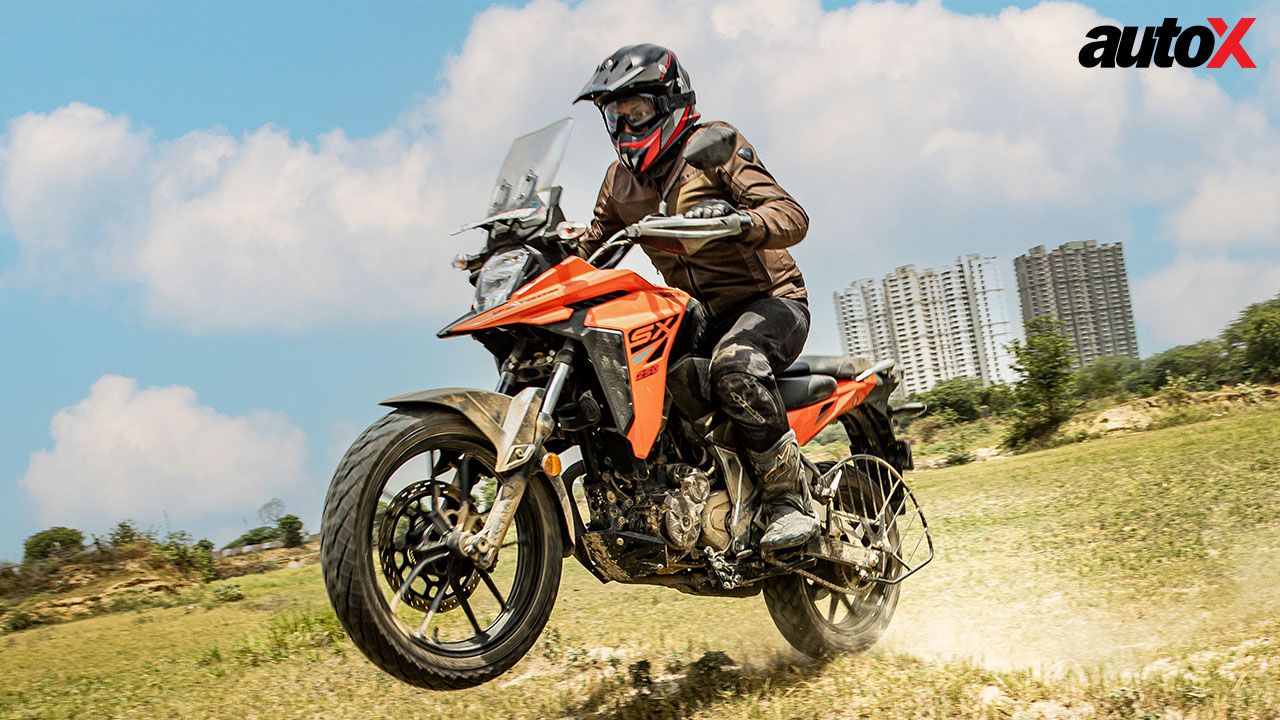
Suzuki V-Strom 250 SX vs Royal Enfield Scram 411: Verdict
After a day of getting dirty with these motorcycles and then riding them back home, some things became quite clear. It was time to throw my first impressions out of the window, as the V-Strom had managed to seriously impress all of us. It may not have as robust a construction as the Scram, but, then, it doesn’t actually need to have one, for the average rider isn’t going to take it on off-road trails every day. And when the day arrives that you do venture off the beaten path, the V-Strom is quite friendly and allows you to immediately start having fun on it. Now, while the Scram wins the off-road test, it does so only by a slight margin. When you head off-road on this bike, you will take a longer time to get accustomed to the weight of the Scram before you can truly start having fun.
On the road, however, the V-Strom wins by a mile. It’s considerably better than the Scram in overall comfort and features, and it’s better on the highway. Plus, it allows itself to be thrown around corners without hesitation. Now, the Scram by itself is a good motorcycle, and you can happily live with it in the city. However, in comparison to the V-Strom, it leaves you wanting more, as you realise that the Japanese motorcycle offers you more value at a similar price, which makes the V-Strom the clear winner of this comparison.
Engine: 411cc / Single-cylinder / oil-cooled
Transmission: 5 Speed
Power: 24.3bhp @ 6500rpm
Torque: 32Nm @ 4250rpm
Price: ₹2.09 Lakh (Ex-Showroom)
X-Factor: can take ON the worst of terrains without a worry in the world.
|
Pros • Low-end torque • Off-road ride quality |
Cons |


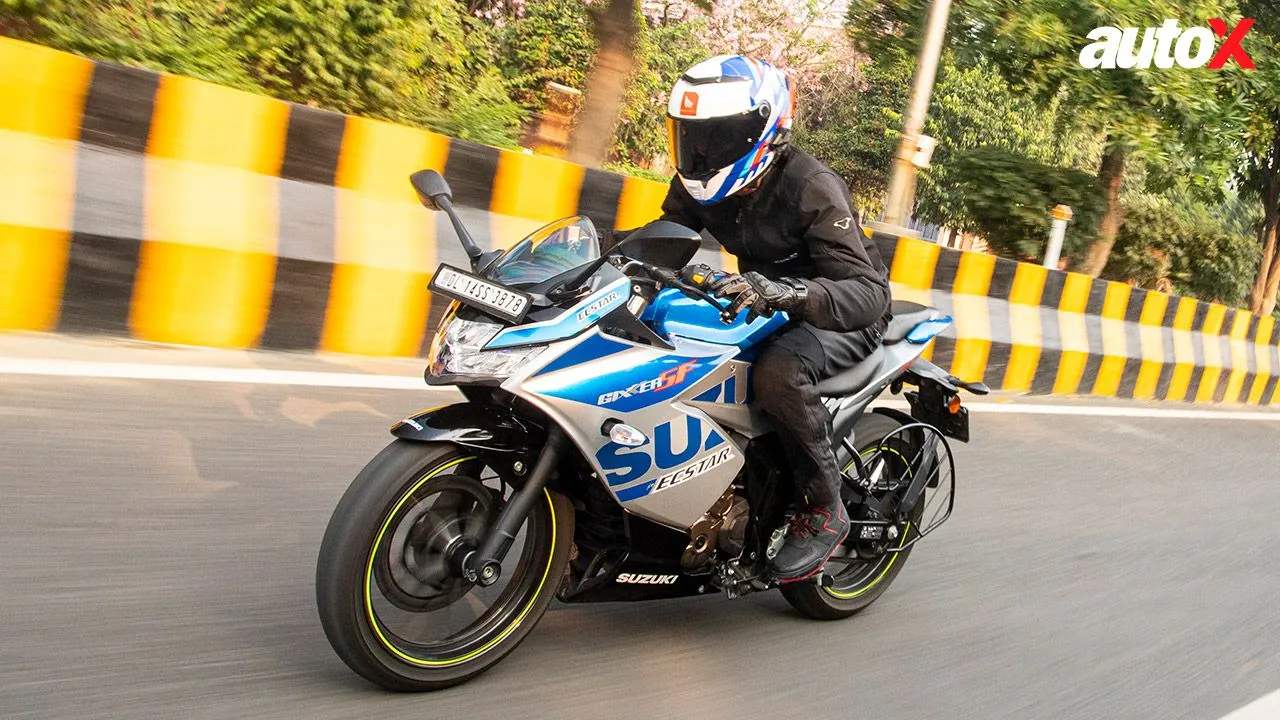

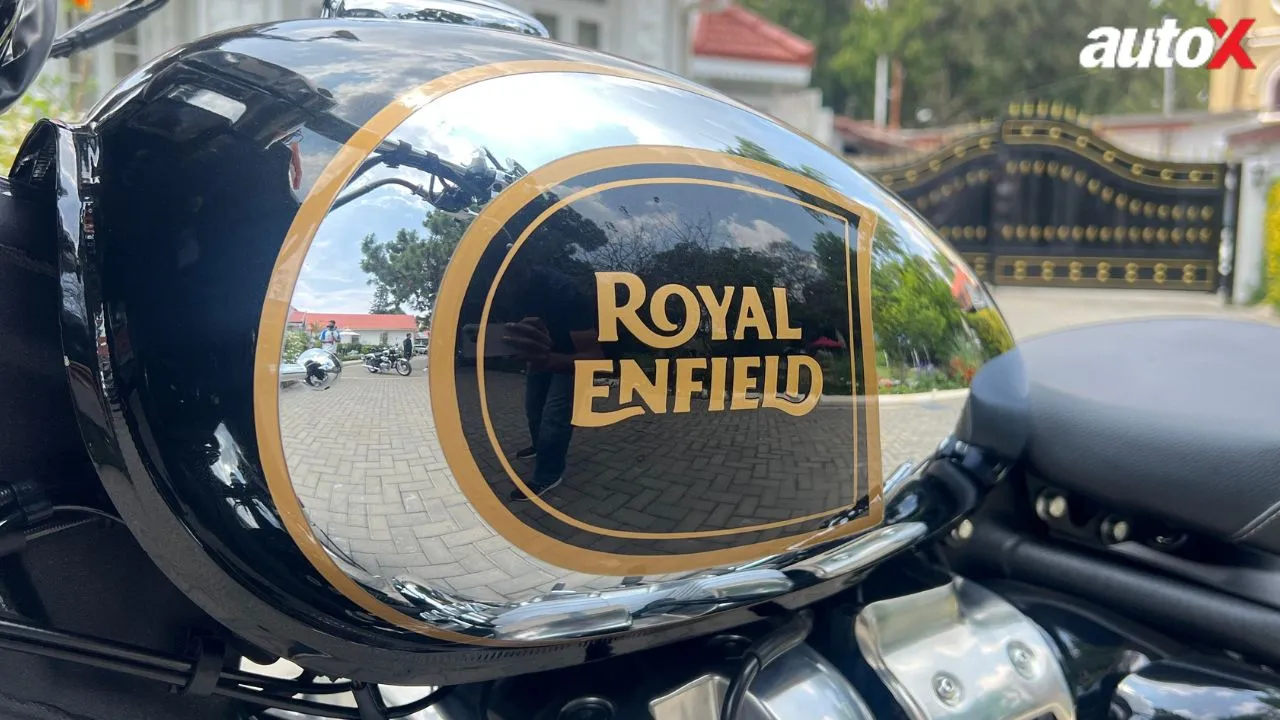

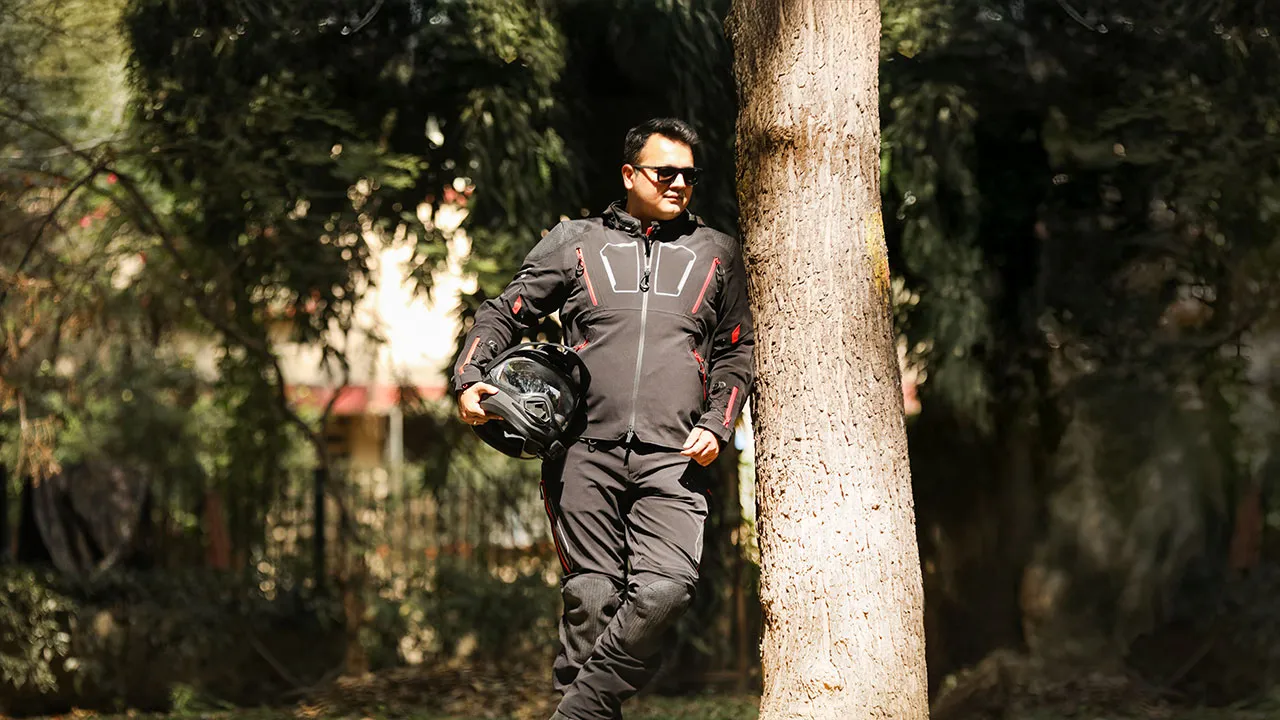
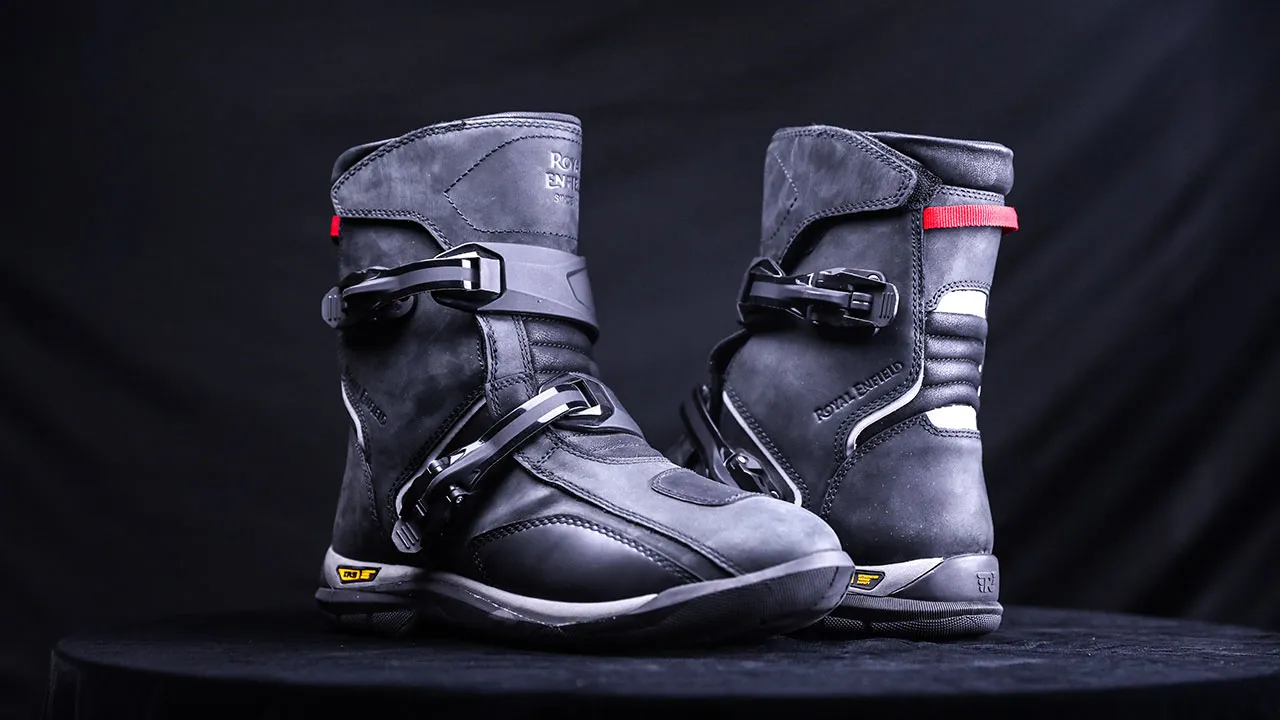
Write your Comment on